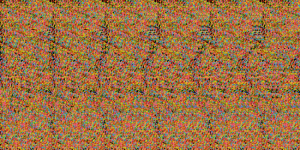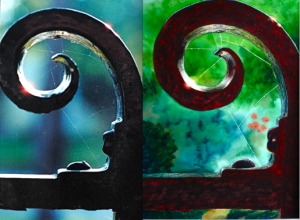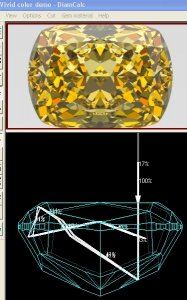- Joined
- Apr 30, 2005
- Messages
- 34,742
Rockdiamond said:Here's a question for Kenny- or anyone else who has a thought on this....
Which of the two Pear/Piano photos more closely approximates what our eyes actually see?
Long Post Warning
Superb question RD, and the answer is, neither, sort of.
Even when not used for trick photography, the camera is kind of a trick that (several generations after its invention) few understand.
The camera and the live eye differ in that the eye is constantly connected to a brain.
They work together to instantly focus on what we are looking at.
A camera can't do that.
With a camera the focus decisions for everything in the view, near and far, are fixed forever the moment the picture is taken.
Evidence of how our brains and eyes are stuck doing only what they normally do is those autostereograms. http://en.wikipedia.org/wiki/Autostereogram
Stare at this long enough and a shark appears, in 3-D.
For me it helps to move close to the monitor and relax my eyes as if I'm looking out the window at the horizon.
The camera was truly a revolutionary invention in the trickery of "seeing".
It changed everything, in ways we are not aware unless pointed out.
I paint and draw and have taken a few art classes.
Drawing well is hard because we no longer see what's really there.
The brain takes shortcuts.
It has to; You'd go insane if you actually processed all the data coming from the eyes.
I have a saying, "Painting is easy; seeing is hard".
In my Beginning Drawing class the subject of "cameravision" quickly came up.
If you look at the art made before the camera was invented everything, near and far, was in focus.
The idea (or today, the artistic decision) to draw/paint a background out of focus to emphasize the subject simply did not exist before the camera.
If you went back in time to 1800 and showed a person this watercolor that I painted (on the right) of the wrought iron gate in front of my house they'd say I'm insane.
Never having seen a photograph with the background out of focus my painting would elicit the reaction: "Does Not Compute!"
Today we are used to seeing such images.
The photo that the watercolor was painted from is on the left.
So RD to answer your question, "Which of the two Pear/Piano photos more closely approximates what our eyes actually see" . . .
The answer is neither, but some might argue the one on the right is closer, sort of.
The problem in comparing a photo to what the live eye/brain system (I'll call EBS) sees, is the live EBS is constantly bringing things into focus as it looks around.
It happens instantly and unconsciously.
When I look at the table of the diamond it is in focus; when I look at the culet it is in focus.
Human eye pupils dilate and constrict in reaction to light not artistic decisions of depth of field, but perhaps when there IS more light and the pupil constricts we DO experience more depth of field when near and far things are in close proximity - but this is just a theory of mine.
Obviously when the EBS looks around a pic it cannot bring things into focus that the camera has sent out of focus.
In real life when looking at the pear the EBS instantly brings the pear into focus.
Then when it looks to find out whether the near piano keys are in focus the system instantly brings them into focus.
Next, when it looks to find out whether the far piano keys are in focus the system instantly brings them into focus.
Like a dog chasing its tail; they eye will never catch anything out of focus.
The camera making everything near and far in focus is as much of a trick as how it can make backgrounds out of focus.
This is why asking whether the LIVE EBS sees everything in the piano-pear set up in focus, or not, is not really a fair question.
You are comparing something captured in one instant by an inferior system to something that is experienced live over time by a superior system.









300x240.png)